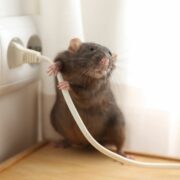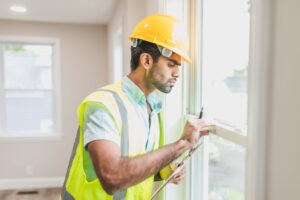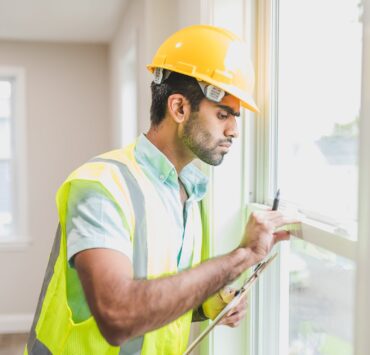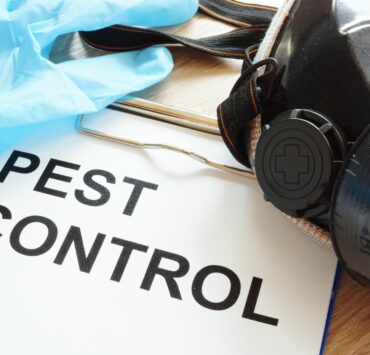Are you hearing strange noises coming from your attic at night? Are you noticing signs of raccoons, such as turned-over trash cans, raccoon droppings, or growling and mewling noises? If so, you may have a raccoon infestation in your attic. In this article, we’ll discuss everything you need to know about raccoons living in your attic and how to humanely get rid of them.
Signs of Raccoons in the Attic
The first step in removing raccoons from your attic is to determine whether they’re actually there. Signs of raccoons in the attic include turned-over trash cans, ripped insulation, droppings, and strange noises like growling or mewling. If you’re seeing these signs, it’s likely that raccoons have made themselves at home in your attic.
Why are Raccoons Hiding in My Attic?
Raccoons are attracted to attics because they provide a warm and safe shelter for them to raise their young. In the winter months, attics can also provide a source of food for raccoons, as they may scavenge for food in nearby garbage cans. Once a raccoon has established itself in your attic, it can be difficult to remove without professional help.
Why are Raccoons a Concern?
Raccoons can transmit diseases to humans and pets, such as rabies and leptospirosis. They can also be destructive, causing damage to insulation, wiring, and other materials in your attic. Additionally, their feces and urine can create a foul odor and pose a health risk to humans.
How To Get Rid of Raccoons In The Attic?
First Things First: Find And Seal The Entry Points
The first step in removing raccoons from your attic is to find the entry points they’re using to get inside. Raccoons can gain access through vents, holes in the roof, or gaps in the siding. Once you’ve found the entry points, seal them off with mesh wire or other materials to prevent the raccoons from re-entering. Don’t attempt to remove raccoons from your home if you haven’t yet sealed identified entry points. It may be a wasted effort as they’ll simply come back in.
Next, Keep an Eye Out for Babies
If you suspect that a mother raccoon and her babies are living in your attic, it’s important to keep the young safe and strong enough to be moved before removing the mother. This is crucial for humane raccoon removal. It’s best to wait until the babies are old enough to leave the attic with their mother before sealing the entry points.
Start Small: Use Loud Noises, Foul Smells, and Bright Lights
Encouraging raccoons to leave your attic can be done humanely by creating an uncomfortable environment for them. Loud noises, foul smells, and bright lights are effective deterrents for these nocturnal animals.
Ammonia or vinegar-soaked cloths can create an unpleasant odor, while keeping your attic well-lit can make it an undesirable space. In addition, ammonia and ultrasound deterrent devices are also available. While these methods can be effective, it’s important to note that raccoons can be stubborn and may require other options such as trapping or professional wildlife removal services.
By taking these steps, you can successfully remove raccoons from your attic and prevent further damage and potential health hazards.
Set Out Raccoon Traps
If you can’t drive raccoons out using light and foul odors, the next option would be to set out raccoon traps. Bear in mind that not all raccoon traps are the same and some are designed to harm or even kill them. While they may be a nuisance, raccoons hide in your attic to find safety and shelter for them and their babies. With that said, humane raccoon traps are effective and non-negotiable.
Human raccoon traps work by capturing a raccoon through a spring loaded door. When a raccoon enters the trap, the mechanism gets triggered and safely contains them until you’re ready to transfer them outside.
Before proceeding with raccoon trapping, be sure to check with your local wildlife agency for regulations on trapping and relocating raccoons. They may have specific guidelines or requirements that you must follow to ensure safe and humane trapping.
When setting up a raccoon trap, place it in an area where the raccoons are known to frequent. In the case of your attic, you can set the trap near the entry point. You can also place the trap near food sources that attract the raccoons.
Lastly, make it a point to regularly check your raccoon trap. The last thing you want is to accidentally kill a raccoon by leaving it in the trap for too long. Aim for a daily check up so that you can quickly release any trapped raccoons and relocate them to a more suitable location.
When to Call a Professional
If you’re unable to remove the raccoons on your own or if you’re concerned about the safety of yourself or the raccoons, it’s best to call a professional wildlife removal service. These specialists have the expertise and equipment needed to safely and humanely remove raccoons from your attic. They can also provide guidance on preventing future infestations and repairing any damage caused by the raccoons.
Raccoons in the attic can be a real nuisance, but with the right approach, you can effectively remove them without causing harm to yourself or the animals. By identifying the signs of raccoons in your attic, finding and sealing off entry points, and using humane deterrents, you can encourage raccoons to leave on their own. If all else fails, consider setting out humane traps or calling a professional wildlife removal service to handle the job safely and effectively.
Remember to always take a humane approach when dealing with raccoons in your attic, as these animals are just trying to find a safe place to live. By following the steps outlined in this article and taking the necessary precautions, you can successfully remove raccoons from your attic and prevent future infestations. So, don’t let raccoons take over your attic – take action today and enjoy a raccoon-free home!









